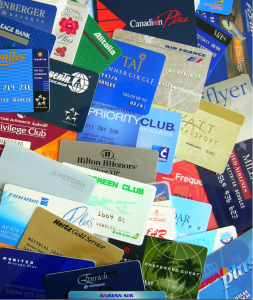Loyalty Programs: Friend or Foe?

Our educated guess would be that about only 25 percent of your wallet’s contents actually get used on a regular basis, if not fewer. Because of this, you’ve likely experienced that moment between total frustration and slight nostalgia as you clean out your wallet and discover a collection of cards from countless stores and brands buried at the bottom. Credit, debit, stamp, punch; the card possibilities are endless. Over time these cards got pushed further and further into the depths of your wallet, collecting dust, as they are forgotten.
The question that remains after looking through the pile is whether or not signing up for a loyalty program really made a difference in how much you shop. On average, a single household is associated with memberships for nearly 29 loyalty programs ranging all across the retail, financial, and travel spheres. The kicker? Only 12 of those are actually used.
Loyalty programs have become such a regular part of the shopping experience, and you are no longer surprised when the cashier asks you to join their “special rewards offering” that day. Sometimes they bribe you with a one-time discount on your purchase, or another kind of perk after you’ve spent a sum of money using the program. There’s always some type of gimmick. The norm for those who choose to sign up it seems is to use it until the first reward is received, and then leave it to gather dust.
On the other hand, recent reports have shown just how effective these loyalty programs can be. Satisfaction rates are up, and convenience has improved with the expansion of mobile apps in relation to the programs. Companies continue to enhance the experience by modifying bits and pieces to not only draw in new customers but to keep longstanding customers interested and happy.
Until recently, Starbucks held one of the more successful rewards programs. The structure was simple: one purchase equaled one star, 12 stars equaled a free beverage. Moreover, an individual would reach “gold” level after spending a certain amount and get certain rewards that way. Their mobile app was, and continues to be, user-friendly, allowing you to pay with your phone and view all assets such as rewards, account balance, store locations and full menus. However this past February, Starbucks announced a change in their rewards system: Stars would no longer represent a number of drinks purchased, but instead a sum of dollars spent. Now, it takes spending $62.50 to receive that free drink, instead of the minimum $24 it used to be.
Our conclusion? When designed and marketed correctly, loyalty programs have the potential to be very beneficial for the consumer. Programs must continue to value simplicity in their processes. It is no longer enough to just have a single perk – the program has to provide an avenue for the company to build a more intimate relationship with the customer.
